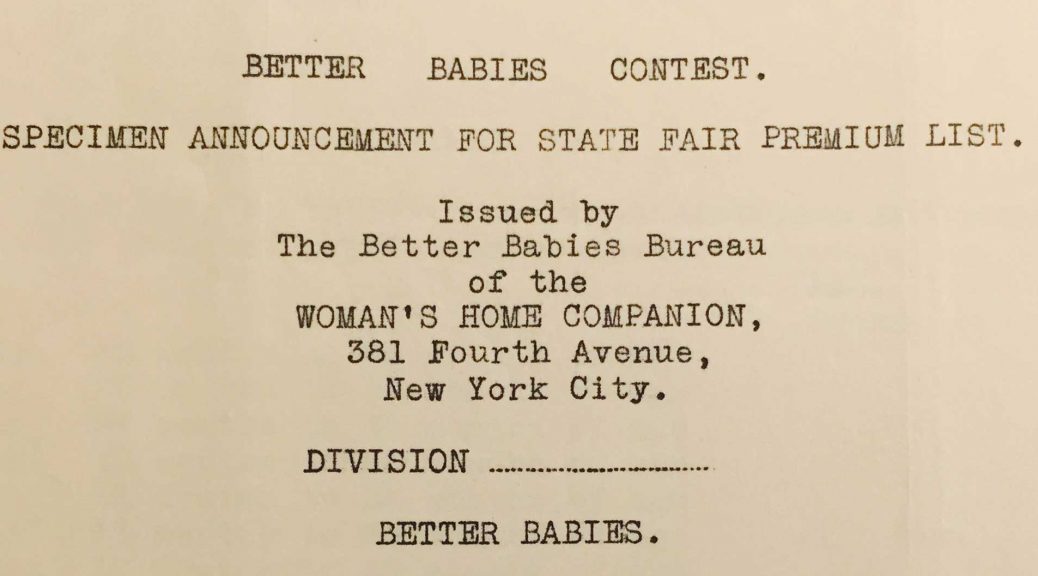“The babies are entered like any other exhibit at an agricultural fair. . . . They are examined by judges, just as live stock [sic], grain or apples are examined. . . . The result is bound to be – not prettier babies, – but better babies at each year’s fair, – a stronger, healthier race of people on the farms, in small towns and in the state.”
This excerpt from a Better Babies Bureau circular, from the papers of Victor Bassett, contains several templates for Better Baby Contest advertisements. Popular at local fairs in the early 20th century, Better Baby Contests presented a lighthearted way to challenge infant mortality and promote fitter populations. However, they also reveal governmental eugenic efforts to objectively quantify and thus improve American health.

Examiners judged children under five years old on their measurements and proportions, mental and developmental states, vision and hearing, and physical development. These tests set government-determined averages as the standard by encouraging families to “produce” children who met or exceeded these ideals. Additionally, they served to cement the public health as existing in the realm of scientific medicine and the government, rather than in the home. These kinds of contests illustrate the complex relationship between eugenics, popular movements, and public health.
Thanks to a generous History of Medicine travel grant, my visit to the Rubenstein Rare Book & Manuscript Library allowed me to conduct research to support my dissertation, “Measuring Health: The United States Sanitary Commission, Statistics, and American Public Health in the Nineteenth Century.” I examine the statistical work of the United States Sanitary Commission (USSC).
During the American Civil War, the USSC attempted to improve the health of the Union Army. The leaders of this organization understood their work as forwarding ideas about preventative medicine and improving sanitation. Yet with the entirety of the Union army at their disposal, the USSC also inspected and measured over one million soldiers and sailors. These records include tabulations not simply of height and weight, but also the distance between a man’s eyes, the size of his head, and angles of his face. The statisticians presented their findings in groups divided by race and education level, and, while they provided limited interpretation of these numbers, they were made available to the broader scientific and anthropologic communities. It was in their hands that these numbers defined medical standards for Americans and shaped the nature of American public health.
My project explores why these statistics were collected and how they were used, and, more broadly, the Commission’s public health legacy. By using these statistics as a starting point, I explore the ties between the USSC and changes in public health, and how research from a 19th century organization continues to impact later public health issues. These Better Baby Contests represent the Commission’s legacy of measuring the quality and usefulness of a human being and of using governmental authority to establish scientific authority.
Post contributed by Sara Kern, a Ph.D. candidate in History & Women’s, Gender, and Sexuality Studies at Penn State University.


